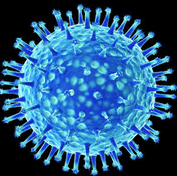 There are few certainties in sports. But, one of them was that the 1963 New York Mets would be better than the team that repeatedly staggered on the field in 1962. This was not especially difficult, since the '62 squad managed to lose 120 games the most in the history of modern baseball and finish 60 1/2 games out of first place. The '63 team was, in fact, "better," but not by much. It still lost 111 games and "tightened up" the pennant race finishing a mere 48 games out.
There are few certainties in sports. But, one of them was that the 1963 New York Mets would be better than the team that repeatedly staggered on the field in 1962. This was not especially difficult, since the '62 squad managed to lose 120 games the most in the history of modern baseball and finish 60 1/2 games out of first place. The '63 team was, in fact, "better," but not by much. It still lost 111 games and "tightened up" the pennant race finishing a mere 48 games out.
There are even fewer certainties in medicine. But, here are three:
- If you get your medical advice from Dr. Oz, you might as well juggle chainsaws.
- If you wanted to learn about vaccine science, you would be better off watching Living Lohan arguably the worst TV show of all time than the GOP debate.
- The effectiveness of last year's flu shot was God-awful.
In today's "Only One Way to Go" feature, we will examine predictions that this year's flu shot will be better.
There were two major problems with last year's vaccine, which provided only a ghastly 23 percent coverage against the three flu strains it was intended to target. A typical shot will protect people 50-60 percent of the time. None of this was anyone's fault, as I discussed earlier this year.
The first problem was that the predominant strain last year was called H3N2, which was one of the more dangerous strains of the virus. Flu seasons in which H3N2 predominates tend to have higher overall hospitalization and death rates. The "Switzerland variant" of H3N2 was predominant last year, and the match between the vaccine and this strain was poor.
Secondly, even when there is a good match between the vaccine and a circulating strain, during the six months that it takes to manufacture the vaccine the virus can mutate, such that what was originally a good match becomes poor. Both of these events happened last year.
But, this problem may have been "fixed." The same H3N2 strain that caused all the trouble last year is circulating albeit still at low levels is again the predominant strain. This year's vaccine will cover this strain, and should be much more effective.
So roll up your sleeve.



